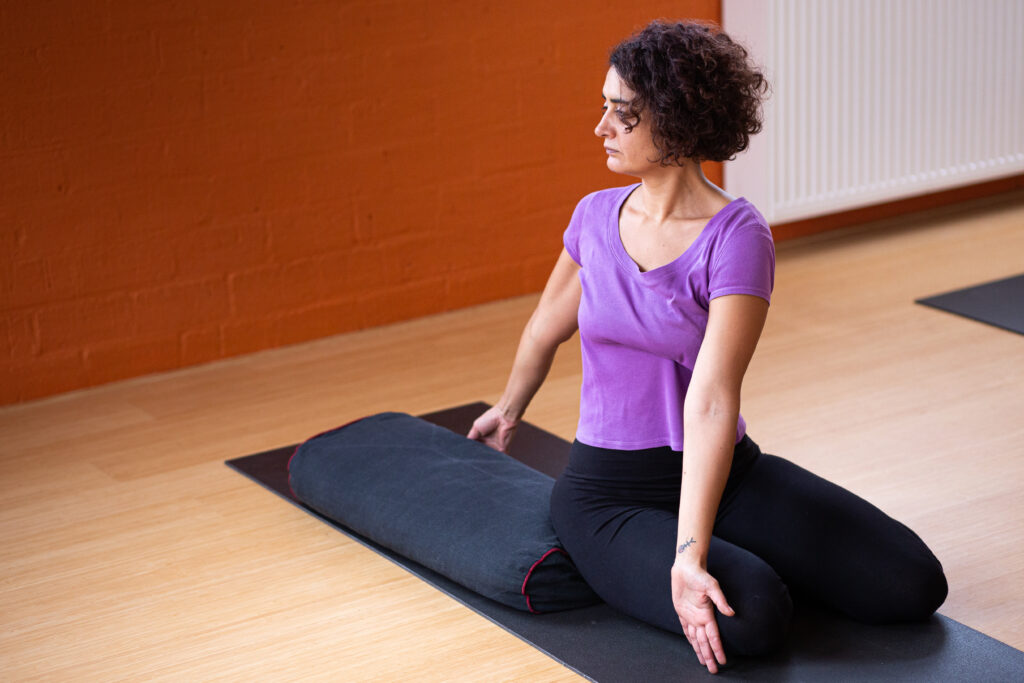
Yoga comes from the sanskrit word “yuj” which means to yoke. A yoke is used to control animals that plough the land, yoga is a means to control/manage ourselves. Yoga also means to unite. Uniting mind and body, mind and soul, and ultimately the union of the individual soul with the universal soul.
The classical text, The Yoga Sutras, from where all yoga stems, was written by Patanjali some 2500 years ago states ‘yoga is the stillness of the fluctuations of thought’. When our minds become quite we are able to experience our own ‘true’ nature, one of freedom and serenity.
Hatha yoga
In hatha yoga we develop our awareness through asana (postures) and breathing exercises (pranayama). The physical body is the most easily accessible to us (we can see, feel & touch the body). Over time this consciousness extends itself to the mind and thought process and deeper still to awaken our spiritual selves. This transformation brings more insight and ultimately enhances all aspects of ourselves & our lives.
This is a practical approach to self-realization through Patanjali’s 8-fold path which consists of:
- Yamas – universal values & standards
- Niyamas – individual disciplines
- Asana – postures
- Pranayama – breathing exercises
- Pratyahara – withdrawl of the senses
- Dharana – one pointed focus of atttention
- Dhyana – meditation/absorbtion
- Samadhi – union/self-realization
